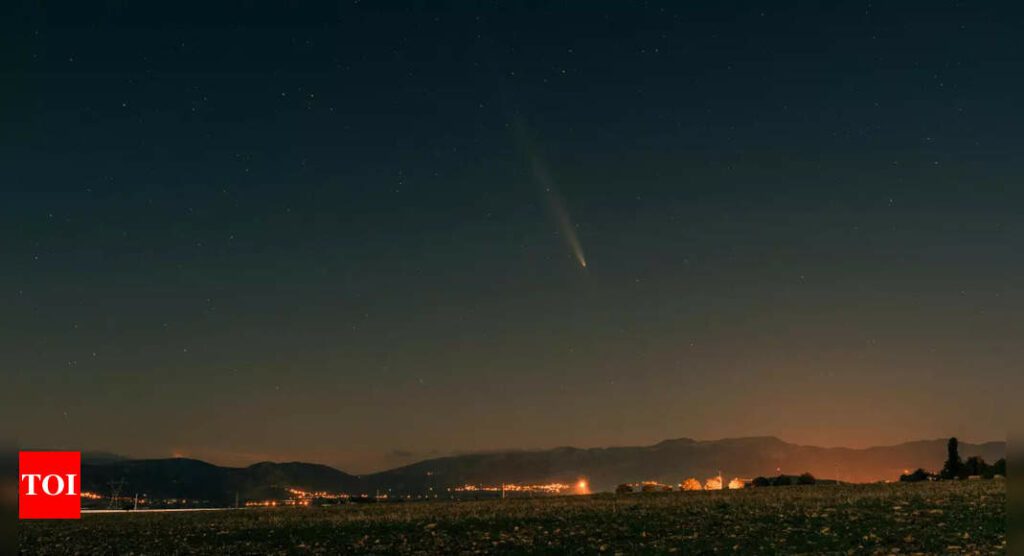A meteor lit up the skies on November 13 around 6: 30 am, Mountain Standard Time (8:31 a.m. EST or 1331 GMT).
The fireball streaked southeast and was visible across Alberta and Saskatchewan in Canada and throughout Montana, Idaho, Washington, Wyoming, and North Dakota. Many doorbell cameras, dash cameras, cell phones captured the fiery spectacle.
The American Meteor Society (AMS) logged 170 eyewitness reports describing the fireball.
“I’ve seen (and photographed) several fireballs before, but this was among the most spectacular I’ve seen. Unfortunately, I was not photographing the Taurid meteor shower this morning, so I did not get a photo of this fireball, I only saw it through a south facing window of my house,” wrote Dave R. of Alberta, Canada.
“A bright green flash was what brought it to my attention. All of a sudden I could see the road and my surroundings as if it was early/mid-morning. At the end, there was a little white spec that continued on out of the train and out of sight. It started with it’s own little streak for a split second, and then was just a dot moving across the sky,” Kaitlynn D. in Corvallis, Montana wrote.
The fireball was so spectacular that it was captured from space. National Oceanic and Atmospheric Administration’s two satellites captured the meteor that burned up in the Earth’s atmosphere. The the GOES-18 spacecraft, saw the meteor with an instrument designed to detect lightning strikes. Another NOAA satellite, GOES-16, also recorded the flash using its lightning sensor.
Meteors are formed when small fragments of meteoroids plunge into Earth’s atmosphere at high speeds from space. Friction with air molecules produces heat, vaporizing most meteoroids and creating the brilliant streaks of light seen from the ground.
Meteors are formed when small fragments of meteoroids plunge into Earth’s atmosphere at high speeds from space. Friction with air molecules produces heat, vaporizing most meteoroids and creating the brilliant.
Skywatchers can expect the next Leonid meteor shower on November 16 under a bright moon which will make seeing them more difficult. Later one can observe December’s Geminid meteor shower.
(Pic courtesy: Pexels)
Source link : http://www.bing.com/news/apiclick.aspx?ref=FexRss&aid=&tid=6737efc5e94e462f9964cf9a5849de6d&url=https%3A%2F%2Ftimesofindia.indiatimes.com%2Fetimes%2Ftrending%2Fsatellite-captures-fireball-exploding-over-north-america%2Farticleshow%2F115345380.cms&c=12051453206832043136&mkt=en-us
Author :
Publish date : 2024-11-15 09:03:00
Copyright for syndicated content belongs to the linked Source.
